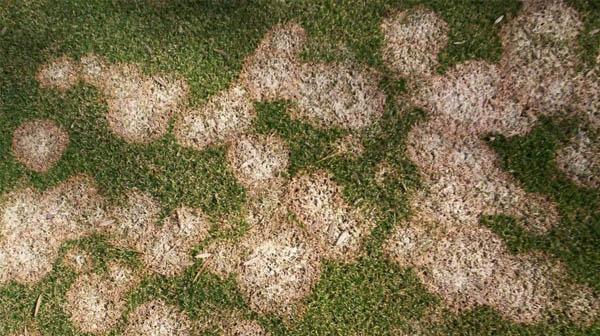
The disappointment in Ed Nangle's voice is unmistakeable when he talks about what a "bad" year it has been so far for snow mold in northeastern Ohio.
"I am!" Nangle replied with more than just a hint of cynicism when asked if he was disappointed that his phone has not been ringing off the hook with calls from golf course superintendents eager to stem an onslaught of snow mold.
As an assistant professor of turfgrass management at Ohio State ATI and one of the country's leading experts on snow mold , Nangle has a deep appreciation for stone cold dead turf as well as the pathogens that cause it. He and a few of his colleagues shared their passion for death and destruction recently at a pink snow mold field day at the ATI campus in Wooster.
"Pictures of dead grass are always good pictures to have. As horrific as it was in 2013 and 2014, there were pictures of dead grass that I may never get again," he said.
"I know snow mold causes frustration for others, but we have to understand that we can learn something from it."
Just maybe not this year.
Warmer-than-average temperatures throughout much of the eastern half of the country have made for conditions that, generally speaking, have not been conducive to snow mold development. For example, Chardon in northeastern Ohio is known as the state's "snowiest city" with average annual snowfalls of almost 110 inches. This year, only about half that amount has fallen.
There has been little prolonged snow cover needed to promote gray snow mold. And even pink snow mold, which needs little more than cool, damp and shady conditions to blossom, has had a tough time gaining a foothold in many areas. Although a broad, sweeping cold snap throughout most of March has scientists "hopeful".
Temperatures in the eastern half of the country have been more seasonable throughout March, meaning superintendents should be on the lookout at least for pink snow mold.
"In the Northeast, up until a few weeks ago, we've had pretty mild conditions that have not been conducive to snow mold," said Bruce Clarke, Ph.D., of Rutgers University. "March is typically a month when we see snow mold.
"For pink snow mold, you don't need snow. All you need is cold, moist weather. I can only speak for New Jersey, but superintendents probably should begin scouting their course."
I know snow mold causes frustration for others, but we have to understand that we can learn something from it."
It also is never too late to review management practices for pink snow mold.
Pink snow mold thrives in temperatures between 35 degrees and 50 degrees Fahrenheit, and isolates can grow in shade in June with temperatures as high as the upper 60s, Clarke said. The pathogen also tends to be more active in high-pH soils. He warns not over fertilize late in fall because the pathogen also thrives when late-autumn turf is lush and succulent when it should be going into dormancy.
Clarke recommends two preventive applications of a tank mix of two or more fungicides three weeks apart in late fall.
Although there are not resistance issues with pink snow mold like there is with dollar spot control, some of the older chemistries Not tremendous resistance issues, like with dollar spot, some to some of older chemistries like benzimidazole are not as efficacious as they once were, so rotating chemistries is a must.
Tank mixing improves efficacy since different strains react differently to different chemistries, Clarke noted.
"Strobilurins and DMIs together work well for us," he said. "If you put them out alone, often you don't get control. There are multiple strains, and when you put them together they seem to take care of all the strains."
That should be enough until spring, when a subsequent application should be made to bridge the gap until temperatures climb.
Some areas, however, including mountainous regions and the Pacific Northwest often have conditions conducive to year-round pink snow mold activity.
While preventive fungicide applications in late fall and the use of covers can help prevent snow mold from appearing on putting greens, it is possible to have too much of a good thing, Clarke said.
Rutgers research shows that while permeable covers can help in the fight to manage pink snow mold, two covers atop one another traps moisture and results in increased incidence of the pathogen.
When Nangle went scouting for snow mold activity in advance of the field day conducted with ATI colleague Zane Raudenbush, Ph.D., and David Gardner, Ph.D. of OSU's main campus in Columbus, he found very limited activity.
But when some is spotted and the potential for damage is real, he reminds superintendents that it is important to stay in front of the problem with golfers and members.
"Use all methods necessary to communicate," Nangle said. "Go to the USGA. Go to your local golf association. When it's a rough winter, it's a rough winter for everybody. There is going to be some damage and you have to communicate that to your membership. Make sure everyone knows what is going on, because they'll think it is only happening to them."

